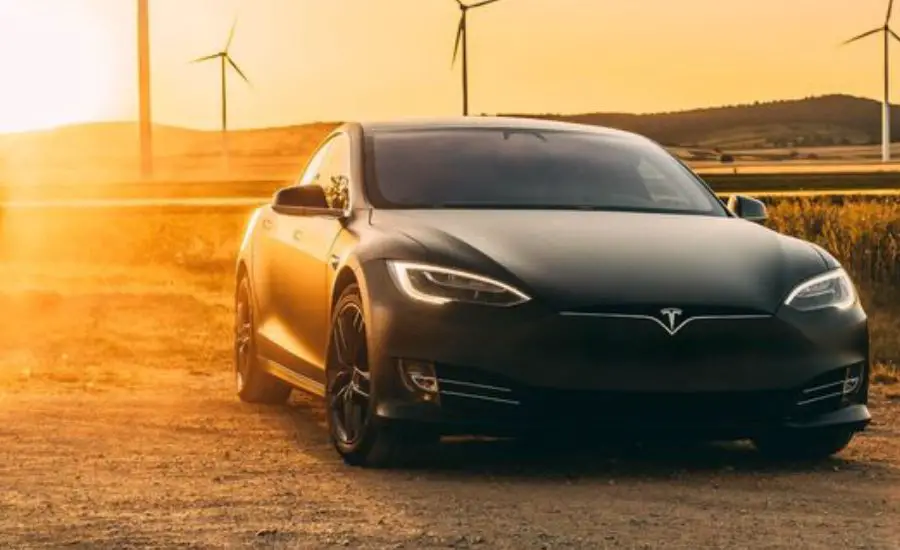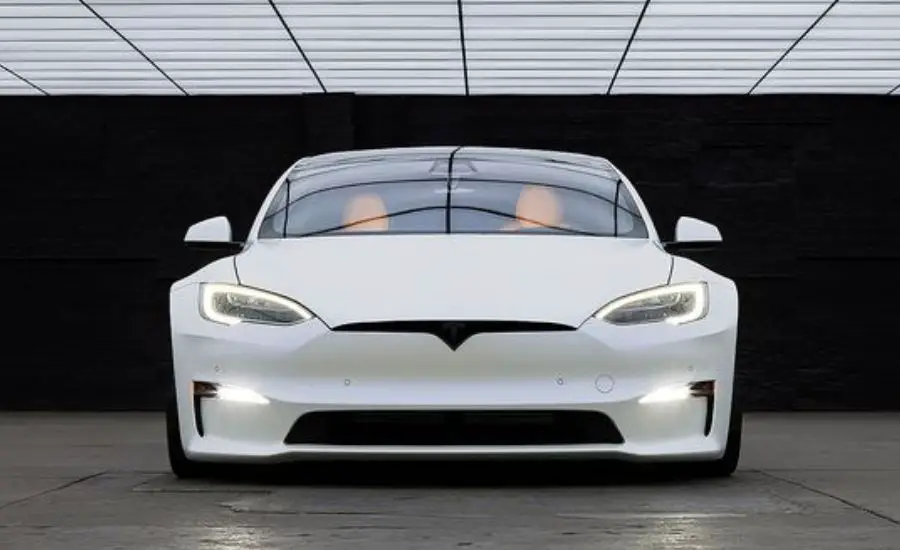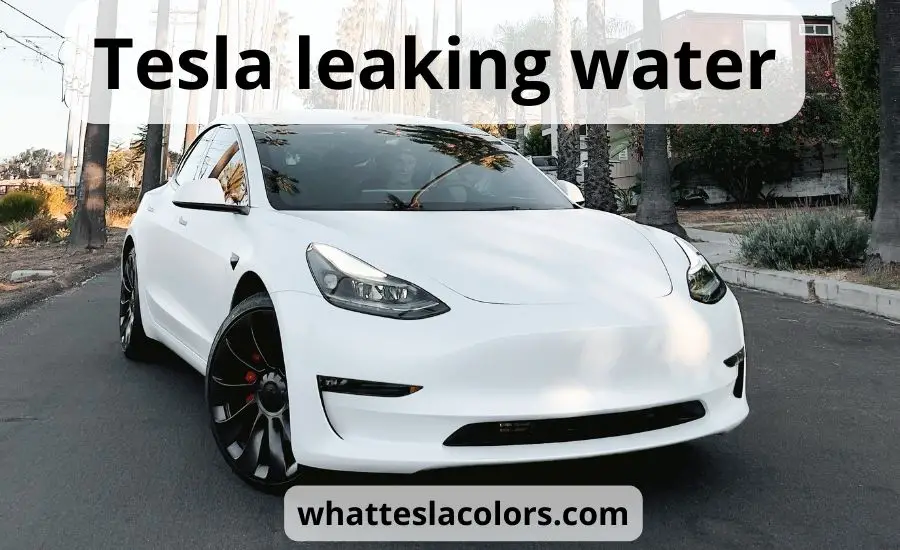Water leakage in vehicles can be a common occurrence and cause car owners frustration. Even the prestigious Tesla, known for its advanced electric vehicles, may experience water leaks in certain situations.
This article delves into the causes of water leakage in Tesla cars, explores potential solutions, and offers prevention tips.

Contents
Common causes of leaking water in Tesla model
Faulty door seals: An electric vehicle, like any other car, relies on door seals to keep the interior dry. Over time, these seals can wear out, become misaligned, or develop cracks, allowing water to enter the cabin.
Sunroof or panoramic roof leaks: Tesla models equipped with sunroofs or panoramic roofs may experience leaks if the seals around these features deteriorate or become damaged.
Heavy rain or car wash without car wash mode can exacerbate the problem.
Furthermore, the glass roof and rubber seals, if equipped in the Tesla model, can be another area where leak water may occur.
The rubber seals around the glass roof should be inspected regularly for any signs of wear, cracks, or misalignment. Damaged rubber seals can allow water to seep through, resulting in interior leakage during rain or washes.
Clogged drain tubes: Drain tubes in the sunroof or HVAC system help channel water away from critical areas. If these tubes become clogged with debris, such as leaves or dirt, water can back up and find its way into the interior.
Improperly installed windshields: In some cases, water leakage can be traced back to poorly installed windshields. Improper sealing during the installation process can result in water seepage during heavy rain or car wash without car wash mode.
Damaged body panels: Accidents or impacts to the body panels of a Tesla can create openings that allow water to enter the vehicle. These openings may not always be visible to the naked eye, requiring a thorough inspection to identify the source of the leak.
Malfunctioning weatherstrips: Weatherstrips play a crucial role in sealing gaps between the car’s body and various components, such as windows and doors. If these weatherstrips deteriorate or become damaged, they can contribute to water leaking.
Windshield fluid: One possible source of leaks is the windshield fluid reservoir or the windshield wiper fluid system.
If there is a crack or damage to the windshield reservoir, it can result in a windshield fluid leak, causing water to seep into the interior of the vehicle. It’s essential to regularly inspect windshield fluid and promptly address any interior leakage or damages.

The broken windshield water tank can’t be responsible for storing the fluid used for windshield cleaning and wiper functionality.
If the tank becomes damaged or develops a crack, it can result in a water leak inside the vehicle.
This type of leak is not related to rain or car washes but rather to a malfunction within the windshield water system.
Air conditioner system: While Teslas utilize an electrically powered air conditioner system, there is still a possibility of leakage.
The air conditioning system removes moisture from the air, which can accumulate and be discharged as water. If the drain hose or other components of the system become clogged or damaged, it can lead to air conditioning water leakage inside the vehicle.
Trunk water leakage: If the trunk seals or weatherstrips are damaged or worn out, water can infiltrate the trunk space. This can be particularly problematic if the water seeps through and reaches the cargo bay floor, potentially causing damage to stored items or the vehicle’s interior.
Drain hose: It is responsible for channeling water away from critical areas, such as sunroofs or HVAC systems. If the drain hose becomes damaged or clogged, water may back up and find its way into the vehicle’s interior.
Regularly inspecting and cleaning the drain hoses can help prevent water accumulation and potential leaks.
Solutions for Tesla leaking water
Here are some quick solutions to the problem.
Inspect and replace door seals
Inspect the door seals for signs of wear, cracks, or misalignment. If any issues are detected, replacing the seals can help prevent water from entering the vehicle.
Check sunroof and panoramic roof seals
Ensure that the seals around the sunroof or panoramic roof are intact and in good condition. If any damage is observed, consider replacing the seals to prevent water leakage.
Clear drain tubes
Periodically clean out the drain tubes associated with the sunroof or HVAC system.
Use compressed air or a thin, flexible wire to remove any obstructions and allow proper water drainage.
Verify windshield installation
If you suspect a water leak around the windshield, have it inspected by a professional. They can assess the installation quality and reseal if necessary.

Thoroughly inspect body panels
Following any accidents or impacts, it is advisable to have a qualified technician inspect the body panels for potential openings that may lead to water leaking. Prompt repairs can help maintain the integrity of the vehicle’s water resistance.
If you notice damaged or deteriorated weather strips, consider replacing them to ensure proper sealing and prevent water intrusion.
If you see your Tesla leak water, it is recommended to contact a Tesla service center or a qualified technician for assistance. They have the expertise and knowledge to diagnose the source of the leak accurately and provide the necessary repairs or replacements.
Prevention tips for Tesla water leak
Regular maintenance and inspections: Adhere to Tesla’s recommended maintenance schedule and conduct regular inspections to identify and address potential issues before they develop into leaks.
Regularly inspecting the rubber seals, weatherstrips, and all critical components mentioned earlier can help identify potential issues before they escalate into significant leaks.
Avoid high-pressure car wash: Opt for touchless or hand wash instead of high-pressure wash, as it can put additional stress on seals and potentially lead to water leaks.
Additionally, avoiding high-pressure car wash and using a car wash mode, as mentioned earlier, can help protect the integrity of the vehicle’s seals and reduce the chances of water infiltration.
Park in sheltered areas: Whenever possible, park your Tesla in covered or sheltered areas to minimize exposure to heavy rainfall, which can increase the likelihood of a water leak.
Be mindful of drainage systems: Avoid parking under trees that shed leaves or other debris, as they can clog drain tubes and impede proper water drainage.
Address water leaks promptly: If you notice any signs of water leaking, such as dampness or musty odors inside the vehicle, address the issue promptly to prevent further damage and potential mold growth.

FAQ
We are glad to answer some popular questions.
Is it normal for Tesla to leak water?
No, it is not normal for a Tesla or any vehicle to have water leaking.
A water leak can occur in Teslas due to various reasons, such as faulty door seals, sunroof or panoramic roof leaks, clogged drain tubes, improperly installed windshields, damaged body panels, or malfunctioning weatherstrips.
However, it is important to note that it’s not inherent for Tesla electric cars to leak water, and it should be addressed and resolved to maintain the integrity of the electric car.
Do Tesla trunks leak?
While a water leak in the trunk of a Tesla is not common, it can occur in certain situations. Trunk leaks in Teslas are typically the result of damaged or worn-out seals around the trunk lid or faulty weatherstrips.
Heavy rain or car washes can exacerbate the problem. If you notice water pooling or dampness in the trunk of your Tesla, it is recommended to have the seals and weatherstrips inspected and replaced if necessary to prevent further leaks.
What is the yellow liquid leaking from my Tesla?
Without specific information about the location and characteristics of the yellow liquid, it is difficult to provide a definitive answer.
However, it is important to note that Teslas are electric cars and do not contain traditional engine fluids like coolant or oil, commonly associated with yellow or amber colors.
If you notice a yellow liquid leaking from your Tesla, it is advisable to have it inspected by a qualified technician or contact Tesla customer support for assistance in identifying the source and appropriate course of action.
Does Tesla leak oil?
No, Teslas do not require traditional engine oil like internal combustion engine vehicles. Tesla vehicles are powered by electric motors, and as such, they do not have an internal combustion engine that requires oil for lubrication and cooling purposes.
This means that Teslas do not have engine oil that can leak. However, other fluids such as coolant or battery coolant may be present in a Tesla and could potentially leak if there is a malfunction or damage to the respective systems.
Conclusion
While Tesla vehicles are renowned for their cutting-edge technology and innovation, they are not immune to water leaking.
Additionally, it’s essential to address any issues related to leaking brake fluid promptly. While not directly linked to leaks of water, leaking brake fluid can create internal moisture that may contribute to the accumulation of water within the vehicle.
If you notice any signs of brake fluid leaks, such as fluid pooling under the vehicle or a sudden decrease in brake performance, it is crucial to have the brake fluid issue addressed by a professional technician to prevent further damage and maintain optimal braking efficiency.
By understanding the common causes of leaks and implementing preventive measures, Tesla owners can maintain a dry and comfortable interior. Regular inspections, timely repairs, using a car wash mode, and proper maintenance are crucial to ensuring a watertight driving experience in these electric vehicles.



